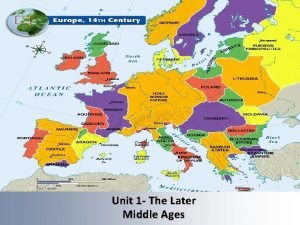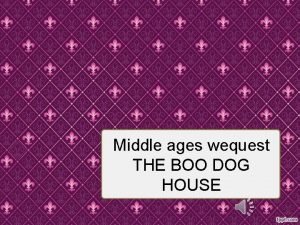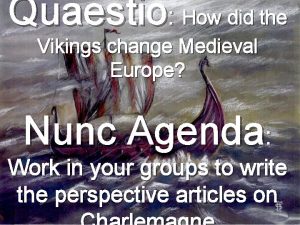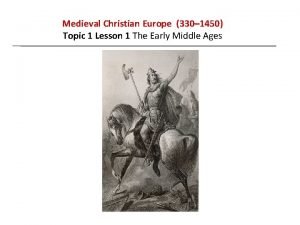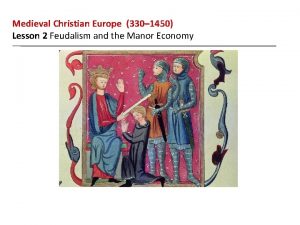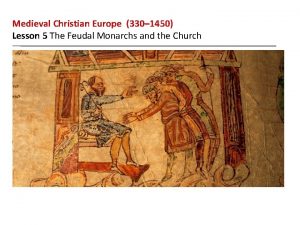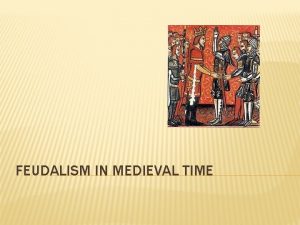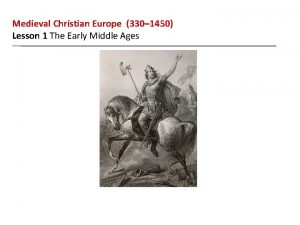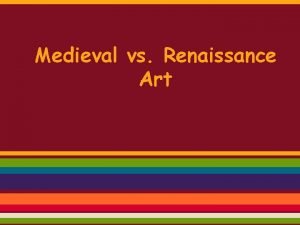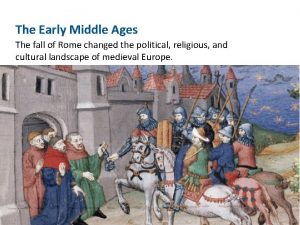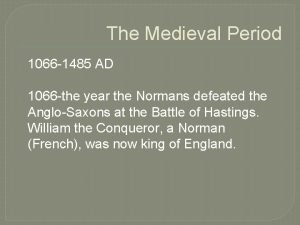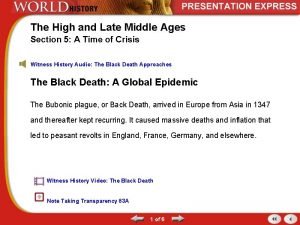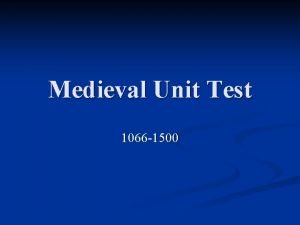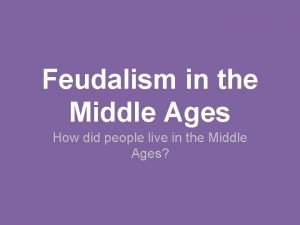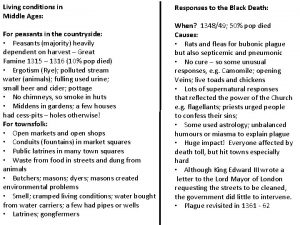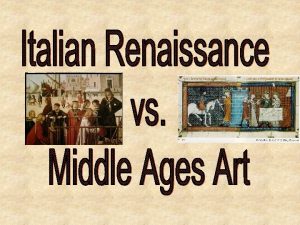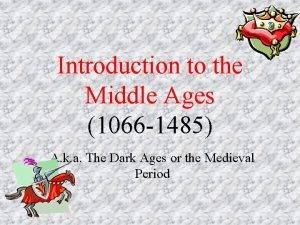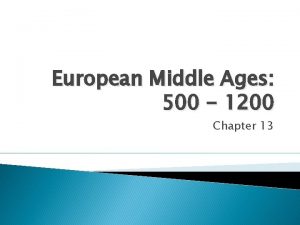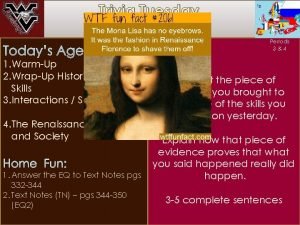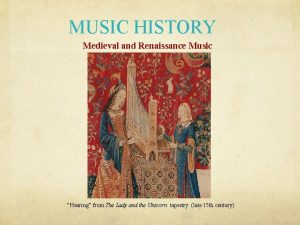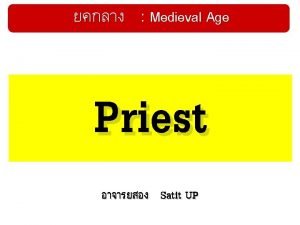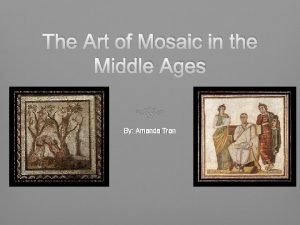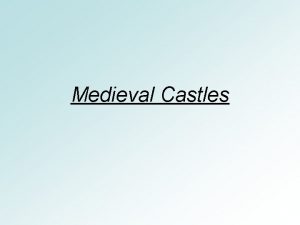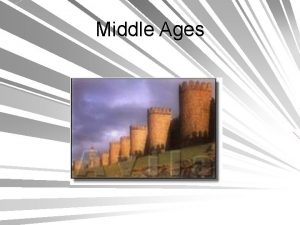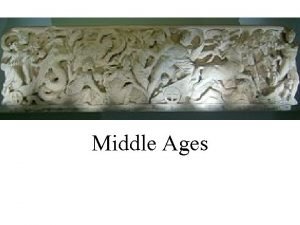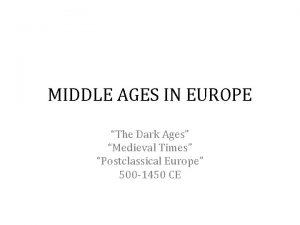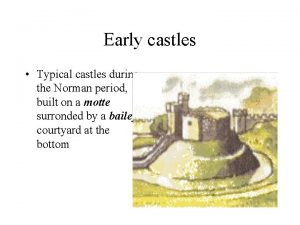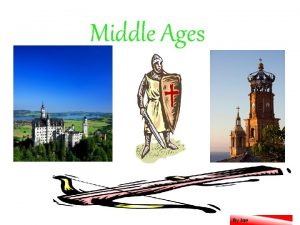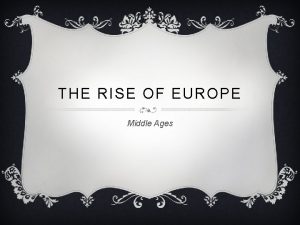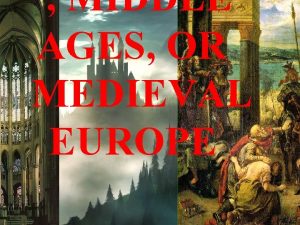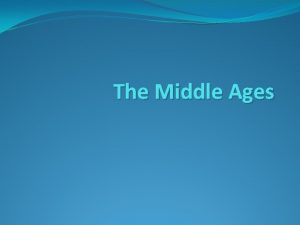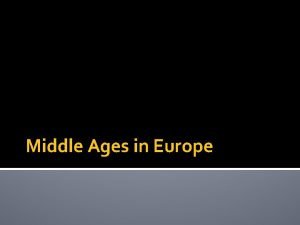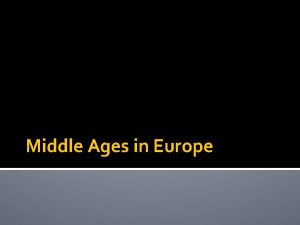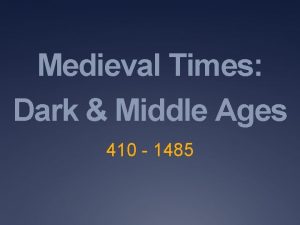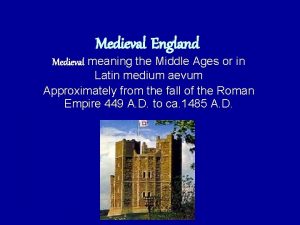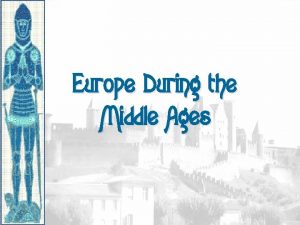Medieval Castles Europe in the Middle Ages During


























- Slides: 26

Medieval Castles






Europe in the Middle Ages • During Medieval times (1066 – 1400), Europe was divided into many small nation -states. Conflicts were common. • Castles played a central role during this time.

Castles and Kings • Castles were not just used by the king. • Most castles were granted by a king to their most loyal subjects, knights or barons, who fought in battle and supported their king. • The king, starting with William the Conqueror, would give his knights huge estates and permission to build castles. • In return, he expected these men (most of whom were given the titles of earl or lord) to control their lands as the king's representative, to keep the local population from rebelling, and to force them to work and pay rent to the lord (who then passed it onto the king).

Castle’s Function • In times of war, the castle served as the base and helped the king or nobleman defend his lands. • The castle served as home, barracks, armory, storehouse, prison, treasury, and administrative center.

Early Castles • The first castles that were constructed were not the palaces as we know today. They were defensive walls built around a city for protection from enemies.

Motte and Bailey Castles • At first, simple wooden homes sat atop a hill or an artificial mound called a motte. • The bailey was the courtyard within the walls of the castle. • Ideally, the structures were built on sites that commanded a view of the countryside.



Later Castles • Through time, castles evolved into fortresses of great strength and were used for military strategy. • These new kinds of castles were built of large, thick stone, and had many walls and towers.

Concentric Castles • Concentric castles would have two circuits of walls and flanking towers. The inner wall would be higher than the outer.

Historical Significance • Because of their military function, castles gained a political purpose. They were the homes of the kings, queens, and other royalty who ruled the land. • Over time, wealthy landowners were known to construct castles, even if they did not belong to royalty.

Moats Water, or a wide ditch, very often surrounded the castles.

Turrets and Towers A castle turret was a small tower rising above and resting on one of the main towers, usually used as a look out point.

Battlements A narrow wall built along the outer edge of the wall walk to protect soldiers against attack.

Merlon - Battlements (or crenellation) are the parapets of towers or walls with indentations or openings alternating with solid projections. Merlons are the saw-tooth effect or the "teeth" of the battlements.

Wall Walks • High at the top of the castle, fighting platforms were built. • Knights had the ability to shoot arrows at the enemy from an advantageous spot.

Gate House The castle gatehouse was the complex of towers, bridges, and barriers built to protect each entrance through a castle or town wall.

Arrow Slits A narrow vertical slit cut into a wall through which arrows could be fired from inside.

Keep The inner stronghold of the castle was called the keep.

Stairways The stairways were built upon spiral vaults, winding around a central newel. This spiral stairway turned on the right as it ascended, so that those defending from above would have the greatest space in which to use their sword arm.

Important Points about Castle Structure: • Large and great defensive strength • Surrounded by a wall with a fighting platform • Usually had a large, strong tower
 Dark ages def
Dark ages def Dark ages vs middle ages
Dark ages vs middle ages European middle ages map
European middle ages map Discuss the art of emerging europe
Discuss the art of emerging europe Around 900 ce a new form of government called
Around 900 ce a new form of government called “how did the vikings change medieval europe?”
“how did the vikings change medieval europe?” Topic 1 medieval christian europe
Topic 1 medieval christian europe Feudal europe map
Feudal europe map Which actions did french kings take to increase royal power
Which actions did french kings take to increase royal power Lord hierarchy
Lord hierarchy Medieval kingdoms in europe lesson 1
Medieval kingdoms in europe lesson 1 Medieval art vs renaissance art
Medieval art vs renaissance art Early middle ages
Early middle ages Sacred music of the middle ages
Sacred music of the middle ages The middle ages 1066-1485 unit test
The middle ages 1066-1485 unit test The high and late middle ages section 5 quiz
The high and late middle ages section 5 quiz The middle ages 1066 to 1485 unit test
The middle ages 1066 to 1485 unit test Feudal system in the middle ages
Feudal system in the middle ages Living conditions in the middle ages
Living conditions in the middle ages Renaissance vs middle ages
Renaissance vs middle ages Middle ages buildings
Middle ages buildings The middle ages 1066 to 1485 unit test closed book
The middle ages 1066 to 1485 unit test closed book 500
500 Middle ages renaissance
Middle ages renaissance Church modes
Church modes Ranks of the catholic church
Ranks of the catholic church Mosaic middle ages
Mosaic middle ages


